
Baron Poltimore, of Poltimore in the County of Devon, is a title in the Peerage of the United Kingdom. It was created in 1831 for Sir George Bampfylde, 6th Baronet. His son, the second Baron, held office as Treasurer of the Household from 1872 to 1874 in the first Liberal administration of William Ewart Gladstone.
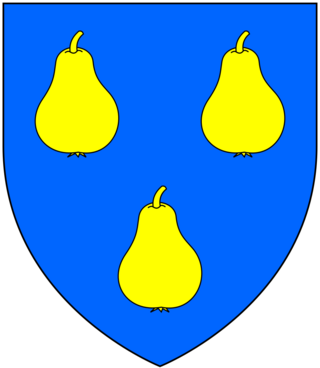
The Stucley Baronetcy, of Affeton Castle in the County of Devon, is a title in the Baronetage of the United Kingdom. It was created on 26 April 1859 for George Stucley, Conservative Member of Parliament for Barnstaple from 1855 to 1857. Born George Stucley Buck, he had assumed by Royal licence the surname of Stucley in lieu of his patronymic, on the death of his father, in 1858 as lineal representative of the ancient Stucley family. This family, which possessed Affeton Castle in Devon for over 600 years, originally came from the village of Stukeley in Huntingdonshire, and were sheriffs of that county during the reign of King John. The family are descended from Richard Stucley, of Trent, Somerset, and Elizabeth Fitzroger his wife. Their son, Hugh Stucley married Katherine Affeton, heiress of the Affeton estates, and was sheriff of Devon in 1448. The fifth Baronet served as a Deputy Lieutenant and High Sheriff of Devon.
Colonel Sir George Stucley Stucley, 1st Baronet DL, known as George Buck until 1858, was a British Conservative Member of Parliament.

Hartland Abbey is a former abbey and current family home to the Stucley family. It is located in Hartland, Devon. The current owner is Sir Hugh George Copplestone Bampfylde Stucley, 6th Baronet.

Affeton Castle is a converted late-medieval gatehouse near East Worlington, Devon, England. It was formerly part of the fortified manor house of Affeton, built by the Stucley family in about 1434, and situated on the side of a valley of the Little Dart River. The manor house was destroyed in the English Civil War of the 1640s, and by the early 19th century the gatehouse was in ruins. It was restored between 1868-9 by Sir George Stucley, 1st Baronet for use as a shooting box or hunting lodge; in 1956, it was converted to form the private home of Sir Dennis Stucley, 5th Baronet. The castle, approximately 60 feet by 22 feet in size, is protected as a Grade II* listed building.

Tapeley is a historic estate in the parish of Westleigh in North Devon, England.

Heanton Satchville was a historic manor in the parish of Petrockstowe, North Devon, England. With origins in the Domesday manor of Hantone, it was first recorded as belonging to the Yeo family in the mid-14th century and was then owned successively by the Rolle, Walpole and Trefusis families. The mansion house was destroyed by fire in 1795. In 1812 Lord Clinton purchased the manor and mansion of nearby Huish, renamed it Heanton Satchville, and made it his seat. The nearly-forgotten house was featured in the 2005 edition of Rosemary Lauder's "Vanished Houses of North Devon". A farmhouse now occupies the former stable block with a large tractor shed where the house once stood. The political power-base of the Rolle family of Heanton Satchville was the pocket borough seat of Callington in Cornwall, acquired in 1601 when Robert Rolle purchased the manor of Callington.

Stowe House in the parish of Kilkhampton in Cornwall, England, UK, was a mansion built in 1679 by John Grenville, 1st Earl of Bath (1628–1701) and demolished in 1739. The Grenville family were for many centuries lords of the manor of Kilkhampton, which they held from the feudal barony of Gloucester, as they did their other principal seat of nearby Bideford in Devon. It is possible that the family's original residence at Kilkhampton was Kilkhampton Castle, of which only the groundworks survive, unusual in that it had a motte with two baileys.

Colonel John Giffard (1602–1665), of Brightley in the parish of Chittlehampton, Devon, England, was a Royalist leader during the Civil War. Giffard commanded the Devon Pikemen at the Battle of Lansdowne in 1643, in which his 3rd cousin the Royalist commander of the Cornish forces Sir Bevil Grenville (1596-1643) was killed in heroic circumstances. Giffard's loyalty to the Royalist cause led to him being proposed in 1660 as a knight of the intended Order of the Royal Oak. He was personally known to the biographer John Prince (1643–1723) who included him as one of his Worthies of Devon. He was buried in Chittlehampton Church, where his small kneeling effigy survives on the base of the monument he erected in 1625 to his grandfather.

George Wentworth Warwick Bampfylde, 4th Baron Poltimore (1882–1965) of Poltimore and North Molton, Devon, was a peer and major landowner in Devonshire, whose family had been seated at Poltimore from about 1300. He was a Justice of the Peace for Devon and occupied the honorary position of High Steward of South Molton, Devon.

Nutwell in the parish of Woodbury on the south coast of Devon is a historic manor and the site of a Georgian neo-classical Grade II* listed mansion house known as Nutwell Court. The house is situated on the east bank of the estuary of the River Exe, on low-lying ground nearly contiguous to the water, and almost facing Powderham Castle similarly sited on the west bank. The manor was long held by the powerful Dynham family, which also held adjacent Lympstone, and was according to Risdon the site of their castle until John Dynham, 1st Baron Dynham (1433–1501), the last in the male line, converted it into "a fair and stately dwelling house".

Potheridge is a former Domesday Book estate in the parish of Merton, in the historic hundred of Shebbear, 3 miles south-east of Great Torrington, Devon, England. It is the site of a former grand mansion house re-built by George Monck, 1st Duke of Albemarle (1608–1670) circa 1660 on the site of the former manor house occupied by his family since at the latest 1287. It was mostly demolished in 1734 after the death of the widow of his son Christopher Monck, 2nd Duke of Albemarle.
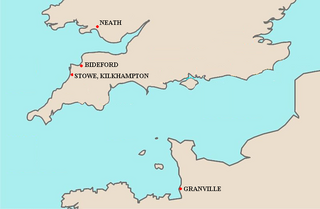
Sir Richard de Grenville was one of the Twelve Knights of Glamorgan who served under Robert FitzHamon, in the conquest of Glamorgan in Wales. He obtained from FitzHamon the lordship of Neath in which he built Neath Castle and in 1129 founded Neath Abbey. He is by tradition the founder and ancestor of the prominent Westcountry Grenville family of Stowe in the parish of Kilkhampton in Cornwall and of Bideford in Devon, the later head of which family was John Granville, 1st Earl of Bath (1628–1701). The surname of his supposed descendants the Westcountry Grenville family was spelled by tradition "Grenville" until 1661 when it was altered to "Granville".
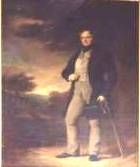
Lewis William Buck (1784–1858) of Moreton House, Bideford, and Hartland Abbey, Devon, was Member of Parliament for Exeter 1826–32 and for North Devon 1839–57, and was Sheriff of Devon in 1825/6. A full-length portrait of Lewis William Buck by Francis Grant (1803–1878) was presented to him by the people of North Devon after he had served eighteen years as their MP, now displayed in the billiards room of Hartland Abbey, with his electioneering posters on each side.
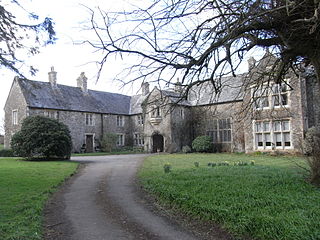
Orleigh is a historic manor in the parish of Buckland Brewer, situated 4 miles to the south west of Bideford, North Devon, England. The manor house is known as Orleigh Court.
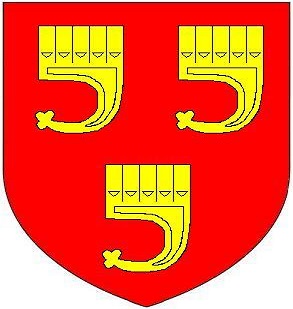
The manor of Bideford in North Devon was held by the Grenville family between the 12th and 18th centuries. The full descent is as follows:

The Manor of Poltimore is a former manor in Devon, England. The manor house known as Poltimore House survives in its 18th-century remodelled form, but has been dilapidated for several decades. A charity named the "Poltimore House Trust" has been established for the purpose of its restoration. The manor was situated within the historic Wonford Hundred and was largely coterminous with the parish of Poltimore and contained the village of Poltimore, 4 miles (6.4 km) north-east of the historic centre of the City of Exeter. It should not be confused with the eponymous Devon estate of Poltimore in the parish of Farway, 16 miles (26 km) east of Exeter. Poltimore was the principal seat of the Bampfylde family from c. 1300 to 1920.

Yeo Vale is an historic estate in the parish of Alwington in North Devon, England. The grade II listed mansion house known as Yeo Vale House, situated 1 mile east of Alwington Church and 3 miles south-west of Bideford, incorporating a 15th-century gatehouse, was demolished in 1973, having been abandoned as a residence in 1938 and having fallen into a dilapidated state. it was situated in the valley of the River Yeo, a small river flowing into the River Torridge immediately above Bideford. The barton or farmhouse survives, to which was attached the mansion house, together with various out-buildings and stone walls. A private mediaeval chapel was formerly attached to the mansion house and in the early 18th century was demolished and rebuilt as a folly on a hill about 1/4 mile south of the mansion house. It survives today as a ruin overgrown with trees and ivy.

Bernard Granville of Birdcage Walk, Westminster, and Apps Court, Walton-on-Thames, Surrey, a member of an ancient and prominent Westcountry family, was a courtier of King Charles II who served as a Member of Parliament for several Cornish constituencies.

Sir Hugh Stucley (1496–1559) was the lord of Affeton in Devon, and Sheriff of Devon in 1545. His third son was Thomas Stukley, known as "The Lusty Stucley".





















